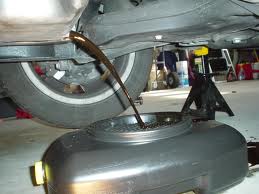Tuesday, 11 June 2013
How to change engine oil.
Some insights into how to change engine oil.
Everyone understands the importance of regular engine oil changes, and those DIY’s amongst us know exactly how to change engine oil: But is there perhaps a better way?Over the past decade, gasoline-refining technology has decreased combustion pollutants, helping to reduce engine oil contaminants. Additives increase the ability of the engine oil to maintain adequate lubrication quality even when contaminated.
As technology advances, the time between oil changes is lengthened. As a result, perhaps
oil changes will be necessary only a few times during the life of the engine. Until then, timely oil changes, maintaining the engine and changing the air filter will help prolong engine life.
What you need to change engine oil.
Changing the oil and filter sounds easy. However, several tricks can simplify the task. Performing the job in a set sequence with the proper tools will not only make it easier, it will also reduce the likelihood of making a mess, or worse, a costly mistake. If the procedure can be performed quickly and easily, it can be an incentive to do it regularly. There are a few supplies needed for the procedure:- disposable gloves and paper towels
- filter wrench
- correct size socket or wrench
- sealable oil drain-pan
- new oil filter
- correct grade and quantity of engine oil
Methods to change the engine oil.
There are two methods of carrying out an engine oil change.The first is to bring the engine up to operating temperature. This will require the engine to idle for a time or be driven until warm. With the engine warm, drain the sump and change the filter. The idea behind this is contaminants are suspended in the oil, and when the sump is drained, the harmful contaminates drain with the oil.
An added advantage of draining the oil while hot is that the oil is less viscous and therefore you’re able to drain more of the old oil from the sump and oil channels.
The second method is to drain the oil when the engine is cool, when a good percentage of the oil has settled into the sump.
Draining the oil when the engine is cool offers the following benefits:
- when the engine has been at rest for several hours and the drain plug is removed, the oil is cool and drain flow is more controllable
- pressure between the filter and the filter housing has bled off, making filter removal a cleaner process.
The area where the engine oil change is performed should be reasonably level as most sump bottoms are formed to tilt toward the drain plug.
Engine Oil Change Procedure.
- Wearing disposable gloves, use a paper towel to clean the area around the oil fill cap.
- Open the cap to break any minor vacuum created when the drain plug is removed. Place the drain pan slightly off-center of the drain plug.
- Using a suitable wrench (preferably hex), unscrew the drain plug to the end of the threads. Slowly tip the plug upward and away to get a feel of where to place the drain pan to catch the engine oil. Be sure to place the pan so when draining slows, the pan will catch the oil. (Use a type of drain container that seals tightly for recycle purposes.)
- Remove the old filter and turn it over to drain. In many cases, the friction provided by the disposable gloves will allow a sufficient grip to unscrew the old filter without using a filter wrench. A filter wrench will be required if the filter is inaccessible by hand, if the filter was over-tightened or the engine is hot.
- Clean the filter seat surface of the filter housing. Be sure the rubber gasket from the old filter is not stuck to the filter seat surface. Coat the filter seal with new oil. Install the filter according to filter torque instructions; this makes it easier to remove the filter next time.
- Clean the area around the drain plug and install; wipe area again and check for drain plug weep.
- Close the fill cap, start the engine and check for leaks.
The whole point of changing oil is to ensure the engine runs on clean oil that efficiently lubricates all parts. So more than knowing how to change engine oil, it’s also important to know what oil to use. At Habot Synthetic Lubricants we specialise in high quality synthetic oils that meet the highest quality standards. Call us now.
Subscribe to:
Post Comments (Atom)

1 comments:
Very informative post! I request the admin or author to frequently post these kind of informative posts. you can maintain these type of blogs with web developers in Singapore in affordable rate also. Thank you!
Post a Comment